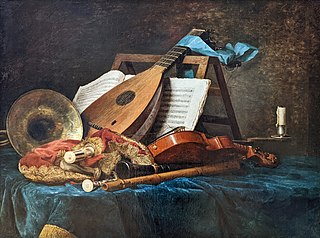
Robert Arthur Moog was an American engineer and electronic music pioneer. He was the founder of the synthesizer manufacturer Moog Music and the inventor of the first commercial synthesizer, the Moog synthesizer, which debuted in 1964. In 1970, Moog released a more portable model, the Minimoog, described as the most famous and influential synthesizer in history. Among Moog's honors are a Technical Grammy Award, received in 2002, and an induction into the National Inventors Hall of Fame.

Hill Auditorium is the largest performance venue on the University of Michigan campus, in Ann Arbor, Michigan. The auditorium was named in honor of Arthur Hill (1847-1909), who served as a regent of the university from 1901 to 1909. He bequeathed $200,000 to the university for the construction of a venue for lectures, musical performances, and other large productions. Opened in 1913, the auditorium was designed by Albert Kahn and Associates. It was renovated by the same firm beginning in 2002 and was re-opened in 2004.

The School of Music, Theatre, and Dance is the undergraduate and graduate school for the performing arts of the University of Michigan, in Ann Arbor, Michigan, United States.

The University of Michigan Library is the academic library system of the University of Michigan. The university's 38 constituent and affiliated libraries together make it the second largest research library by number of volumes in the United States.

The marimbaphone is an obsolete tuned percussion instrument, developed by J. C. Deagan, Inc., of Chicago, Illinois, in the early 20th century.

Carleton Watson Angell was an American sculptor. He was born in Belding, Michigan and died in Ann Arbor, Michigan. He is buried in Washtenong Memorial Gardens near the World War I Veterans Memorial, under a plaque designed by artist Stanley Kellogg.

The Bate Collection of Musical Instruments is a collection of historic musical instruments, mainly for Western classical music, from the Middle Ages onwards. It is housed in Oxford University's Faculty of Music near Christ Church on St. Aldate's.

Hugh Seymour Davies was a musicologist, composer, and inventor of experimental musical instruments.

Trade literature is a general term including advertising, customer technical communications, and catalogues.

The William L. Clements Library is a rare book and manuscript repository located on the University of Michigan's central campus in Ann Arbor, Michigan. Specializing in Americana and particularly North American history prior to the twentieth century, the holdings of the Clements Library are grouped into four categories: Books, Manuscripts, Graphics and Maps. The library's collection of primary source materials is expansive and particularly rich in the areas of social history, the American Revolution, and the colonization of North America. The Book collection includes 80,000 rare books, pamphlets, broadsides, and periodicals. Within the other divisions, the library holds 600 atlases, approximately 30,000 maps, 99,400 prints and photographs, 134 culinary periodicals, 20,000 pieces of ephemera, 2,600 manuscript collections, 150 pieces of artwork, 100 pieces of realia, and 15,000 pieces of sheet music.

Thomas Perry was an Irish luthier who introduced a type of bowed psaltery known as the cither viol or sultana. He is regarded as one of Ireland's most influential violin makers and is often referred to as 'The Irish Stradivari'. Perry's output was quite prolific and his shop has been credited with making over 4,000 instruments. His violins are usually numbered on the button and inscribed just below the button "PERRY DUBLIN".

A musical instrument is a device created or adapted to make musical sounds. In principle, any object that produces sound can be considered a musical instrument—it is through purpose that the object becomes a musical instrument. A person who plays a musical instrument is known as an instrumentalist. The history of musical instruments dates to the beginnings of human culture. Early musical instruments may have been used for rituals, such as a horn to signal success on the hunt, or a drum in a religious ceremony. Cultures eventually developed composition and performance of melodies for entertainment. Musical instruments evolved in step with changing applications and technologies.
Frederick A. Fox was an American composer and former music educator specializing in contemporary classical music.
Daniel William McCarthy is an American composer, author, conductor, professor, and black belt martial artist. He has been Professor and Chair of Music Composition and Theory Studies at The University of Akron: School of Music and held the Theodor Dreiser Distinguished Research/Creativity Award at Indiana State University School of Music. He is co-author of "Theory for Today's Musician" with Ralph Turek, published by Routledge Francis & Taylor, NYC? His career as a conductor included serving on the conducting staff of the Cleveland Chamber Symphony, four seasons as Music Director of the Interlochen Festival Orchestra, Interlochen, Michigan, as well as conducting the University of Akron Symphony Orchestra and the Terre Haute Symphony Youth Orchestra. McCarthy, a dedicated martial artist, was promoted to 3rd Degree Black Belt in Chun Ma Tae Kwon Do in May 2012. A student of Grand Master Jeon Gyeong Ho, Akron, Ohio, he pursued additional studies in Asian Weapons, American Kenpo, and Chin Na Kung Fu with Grand Master Sifu James Adkins in Traverse City, Michigan.

The rabel is a bowed stringed instrument from Spain, a rustic folk-fiddle descended from the medieval rebec, with both perhaps descended from the Arab rabab. The instrument generally has two or three strings of gut or steel, or sometimes twisted horse-hair. The instrument is first mentioned in the 12th century, and it is still used in parts of Latin America, as well as the Spanish provinces of Cantabria and Asturias.
The Sindecuse Museum of Dentistry is a museum of the history of dentistry, operated by the University of Michigan School of Dentistry in Ann Arbor, Michigan. Visitors to the museum can only gain access to the building through the main clinic entrance. Located on the university's Central Campus, the museum is one of only a handful of dentistry museums in the world.
Leopoldo Franciolini (1844–1920) was an Italian antique dealer who was active in the late 19th and early 20th centuries. He is remembered as a fraudster who sold faked and altered historical musical instruments. To this day his work is a barrier to the scholarly study of instruments of the past.
J. Fred Lawton was a lyricist, poet, and businessman active in the greater Detroit area who was closely associated with the University of Michigan for most of his life.

Mary Elizabeth Adams Brown (1842–1918) was an American writer, collector, and curator of musical instruments.















